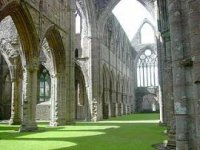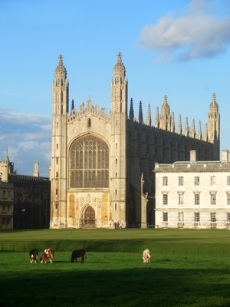British Cathedrals and Churches

We are rich in magnificent Cathedrals: Chichester, famous for its modern art, Canterbury where Thomas a Becket was slain; Salisbury, a symbol of Norman power; the famous dome of St Paul’s in London; St Magnus Cathedral dominating the skyline of Kirkwall in the Orkneys, revering a murdered saint, and the only British cathedral with a dungeon; and Norwich, our most beautiful cathedral close.
For centuries the religious orders of Britain were our hospitals, schools and travellers’ rests, though many were corrupt too. Henry VIII in a few short years from 1536 ended that era when he dissolved and pillaged the orders. But the ruins remaining illustrate their power: the Cistercian Fountains in Yorkshire, the greatest of all; its sister house of Furness in Cumbria, beautiful redstone reminder of monastic industry; and the smaller Tintern Abbey near Chepstow.
In medieval times wealthy merchants tried to buy their way to heaven, leaving us the lovely ‘wool churches’ like Lavenham in Suffolk, Thirsk in Yorkshire, Northleach, or St Mary’s in Worstead, Norfolk, perhaps the finest, epitomising the peace and quiet of the country church.
Some of our churches are famous for other reasons: the chapel actually on the old bridge at St Ives in Cambridgeshire; Rosslyn church in Scotland that features in the Da Vinci Code; St Monan’s church in Scotland, with its photogenic shoreline location.
Even for the non-religious, churches can be moving havens of peace, encapsulating art and history in a moment’s contemplation.
Brit Quote: |
|
On this day: |
